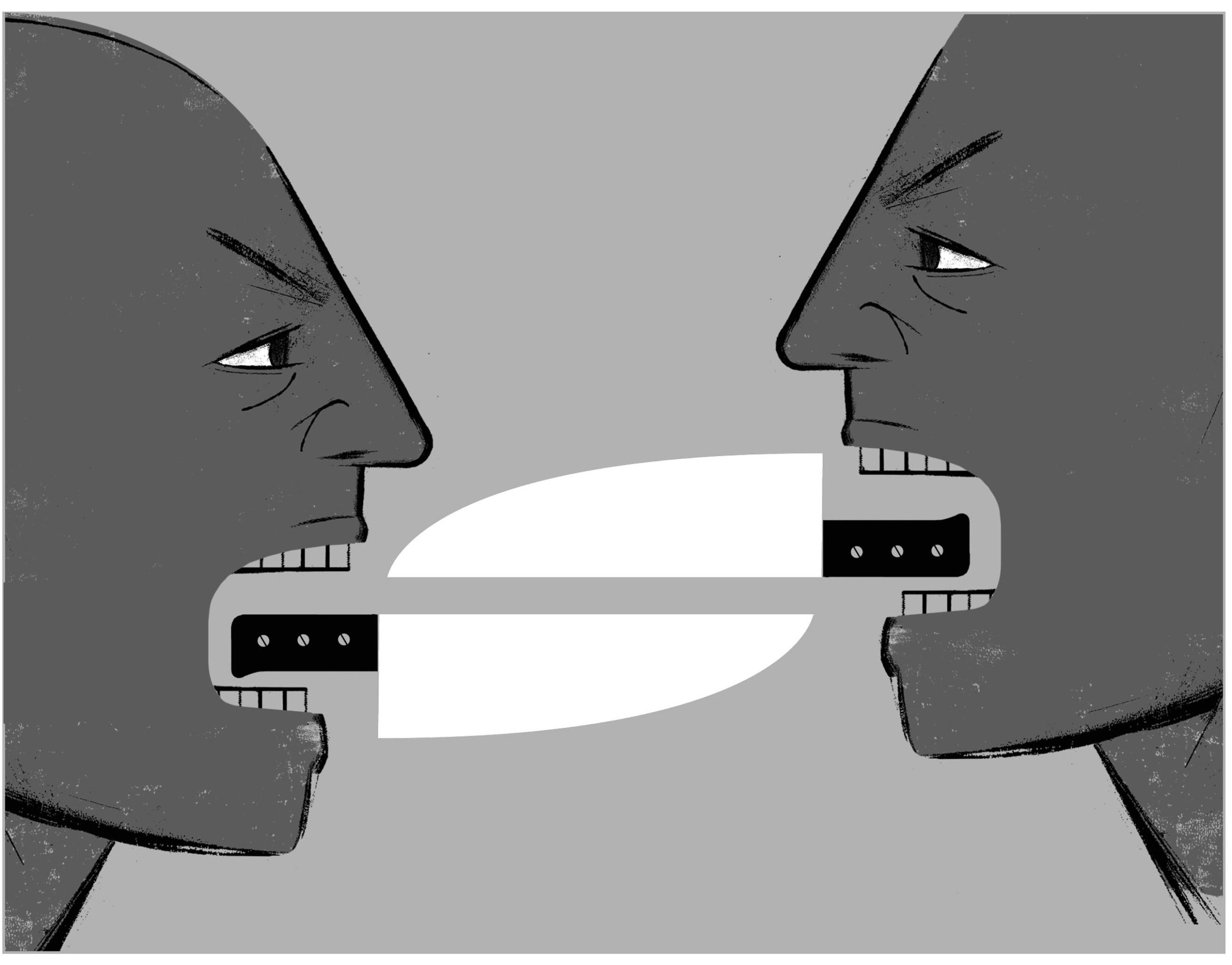When a well-known person denounces a specific group of people—claiming for instance they don’t deserve full citizenship, or they are a threat to the nation—the result can be a violent act against any person perceived to be in the targeted group. How do we know this?
Sadly, the answer emerges from the horrific mass murders in Europe in the 20th century and the role of mass media in speeding information to a large audience. We saw the awful outcome of this process in October 2018, when 11 Jews were murdered at a synagogue in Pittsburgh by a gunman who believed in conspiracy theories. In December 2019 another homicidal attack, also based on conspiracism, targeted a Kosher grocery in Jersey City, N.J. Our nation grieves. Yet not enough attention has been paid to the process of demonization and scapegoating that painted targets on the backs of the victims.
It’s too easy to blame the mass media, however. As consumers, we as a society take time to adjust to new forms of information dissemination and to learn how to judge them. An instructive and more benign example occurred in 1938, when Orson Welles produced a radio program based on the early science fiction book War of the Worlds, by the British author H.G. Wells. Some people hearing the radio play thought it was a live news broadcast and began calling police and other emergency forces, asking how to escape the attack from outer space. We laugh now about Welles’s hoax, but generations later, there are a lot of us on this planet who have yet to adjust to the internet as a new information source.
Scholars theorizing about how mass media information can lead to violence sometimes start with the genocide of the Armenian people, begun during the First World War in what is now Turkey. The scope of the murders during that genocide was enabled by the mass media network of the telegraph. This communications medium not only allowed false, derogatory, and inflammatory information to spread throughout a vast geographic area and to surface in newspaper articles, but it was also used to direct the killing machinery of the military seeking the expulsion or elimination of the targeted sector of the population.
In Germany in the 1920s, radio reports and newsreel films combined with newspapers to spread lies about Jews, leftists of all stripes, homosexuals, and other targets of Adolf Hitler’s venom.
In 1933, Hitler’s mass media propaganda coordinator, Joseph Goebbels, turned radio into the tool of the Nazi Party, to broaden its political base and identify its targets. According to Goebbels, “What the press has been in the 19th century, radio will be for the 20th century.” Radio broadcasts fueled the genocidal murders in Germany and more than a dozen other countries in Europe.
Television was the new media platform in the early 1950s when the egomaniacal and histrionic Senator Joseph McCarthy of Wisconsin used the congressional pulpit to investigate American citizens and their political affiliations. McCarthy held hearing on persons and organizations alleged to be a threat to the United States because of their participation in a range of political and cultural groups in which socialists and communists were said to be active—and sometimes held leadership positions. Protesters objecting to these hearings were physically attacked. In one famous incident, in May 1960, police used fire hoses to sweep angry students down the steps of City Hall in San Francisco, where a hearing was being held by the House Committee on Un-American Activities (known as HUAC).
Today the new mass media platform is the internet, and any high-profile and popular figure can reach tens of millions of people. The technology is new, but the process of blaming scapegoats for societal problems remains the same. As in previous eras, people targeted by malicious verbal falsehoods end up vilified, injured, or killed.
The ringleaders of these sorts of attacks are called “demagogues.” They can be engaged in politics, religion, or entertainment—as long as they are known by a large segment of a population through mass media. Before World War II, the basis for this analysis emerged from what is called the “Frankfurt school” for social science research, which explains the December 5, 2016, headline for an article by Alex Ross in the New Yorker magazine: “the frankfurt school knew trump was coming.” As Ross explains, several “Frankfurters” (as graduate students gleefully call them) moved to the United States, and in 1950, two of them, Max Horkheimer and Theodor W. Adorno, wrote a study on The Authoritarian Personality. Ross explains how the authors “constructed a psychological and sociological profile of the ‘potentially fascistic . . . individual.’ The work was based on interviews with American subjects and the steady accumulation of racist, antidemocratic, paranoid, and irrational sentiments.”
Timothy Snyder is a professor at Yale University who was moved by the ascent of Donald Trump to write a booklet titled On Tyranny: Twenty Lessons From the Twentieth Century. Snyder explains these processes are not new. “Aristotle warned that inequality brought instability, while Plato believed that demagogues exploited free speech to install themselves as tyrants.” Snyder expanded these themes in his 2018 book The Road to Unfreedom.
As a journalist writing about inequality and human rights, I was enlisted by sociologists and other scholars studying the approach of the millennial year 2000. They wanted to know if any far-right movements in the United States were preparing for a possible conspiratorial “New World Order” coup. I ended up on the advisory board of the Center for Millennial Studies at Boston University and working with scholars in the American Sociological Association. In both venues, we discussed the process in which stories about an impending attack by evil forces leads to the mobilization of social and political movements using conspiracy theories identifying the alleged “enemy.”
Out of many discussions emerged the idea of “scripted violence.” This is violence sparked by a storyline or script used by a high-profile public figure identifying sinister threats by evil enemies of the “real” nation. This happens all over the world. The result is now called “stochastic terrorism” in academic studies.
A stochastic terrorist is a demagogue who uses the rhetoric of scripted violence (such as demonization or scapegoating) to imply that a target group is involved in a malevolent conspiracy to destroy the pure society. This type of rhetoric can prompt acts of stochastic terrorism, the process that leads many “lone wolf” terrorists to choose a specific target. There is typically no direct connection between the actual terrorist and the national leader who identifies the wrongly blamed culprits. Such acts of violence are unpredictable—yet the actual type or class of victim has been identified by the demagogic leader. The process itself was identified after World War II by scholars such as Hannah Arendt in her masterpiece The Origins of Totalitarianism (1951) and Gordon Allport in The Nature of Prejudice (1954).
In the United States today, there are white nationalist demagogues who defend racial inequality by claiming white people are the real “producers” of the wealth of the nation but are being dragged down by a heavy anchor of conspiratorial and “parasitic” nonwhite, or immigrant, “undeserving poor.” This caricature of political economy is called “producerism” by scholars. Matthew N. Lyons and I discussed the phenomenon in detail in our book Right-Wing Populism in America: Too Close for Comfort, published in 2000.
The producerist narrative is found in exclusionary racial and religious populist movements now taking over governments in nations around the world. Populism can appear anywhere on the political spectrum, as the scholar Margaret Canovan pointed out back in 1980; all it requires is the idea of a social or political movement defining itself as promoting the interests of “the people” against corrupt “elites.”
When authoritarianism is mixed with right-wing populist rhetoric and producerism, it can lead to the crafting of fascist social movements. Professor Roger Griffin, one of the leading theorists of right-wing social and political movements, considers “populist ultra-nationalism” to be a core building block of fascism. The experience of the 1930s in Europe demonstrated how nasty demonizing rhetoric that targets a specific religion or race (or any identifiable characteristic) can lead to violence by people who have consumed a steady diet of conspiracy theories fed to them by high-profile leaders.
The process is simple. Well-known political or religious leaders suggest there is a subversive conspiracy dragging down a once-great nation. The conspiracy is linked to people with a particular identifiable race, religion, class, or gender identity. Therefore “we” must crush “them” before they can crush “us.”
In late 2015, I wrote a preelection article, for which I interviewed Professor Paul Bookbinder of the University of Massachusetts at Boston. Bookbinder studies German civil society during the Weimar Republic period, prior to World War II, as the country eroded into fascism.
“Right now, our society is facing some of the same tensions as seen in the Weimar Republic,” warned Bookbinder. “People didn’t take seriously the threat to democracy when they could have; and when they did see the dangers, it was too late.”
Chip Berlet, an independent scholar and investigative journalist, specializes in the study of extreme right-wing movements in the United States. His book, Trumping Democracy: From Reagan to Alt-Right, was published by Routledge.







0 Comments